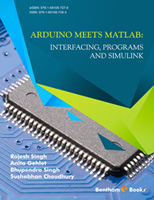Introduction
Budget Optimization and Allocation: An Evolutionary Computing Based Model
is a guide for computer programmers for writing algorithms for efficient and effective budgeting. It provides a balance of theory and practice. Chapters explain evolutionary computational techniques (genetic algorithms) and compare these techniques with traditional approaches to budget allocation.
A case study on the complex and broad problem of union budgeting of India is presented. The macro and micro economic issues specific to the case discussed, with the growth rate being the final aim of the budget exercise. The authors also present a comparison of the budget allocation practices of different countries, consistent with other factors such as their local economy, culture, population, etc. The use of evolutionary computation to tackle incremental budgeting is also presented. Readers will be able to understand the synergies of modern computational techniques with tried and tested budgeting models.
Budget Optimization and Allocation: An Evolutionary Computing Based Model
is a useful reference for graduate students, business enterprise programmers, and evolutionary computing/AI researchers who seek to understand new methods of budgeting.




